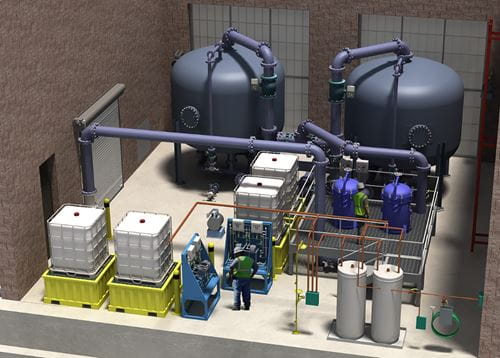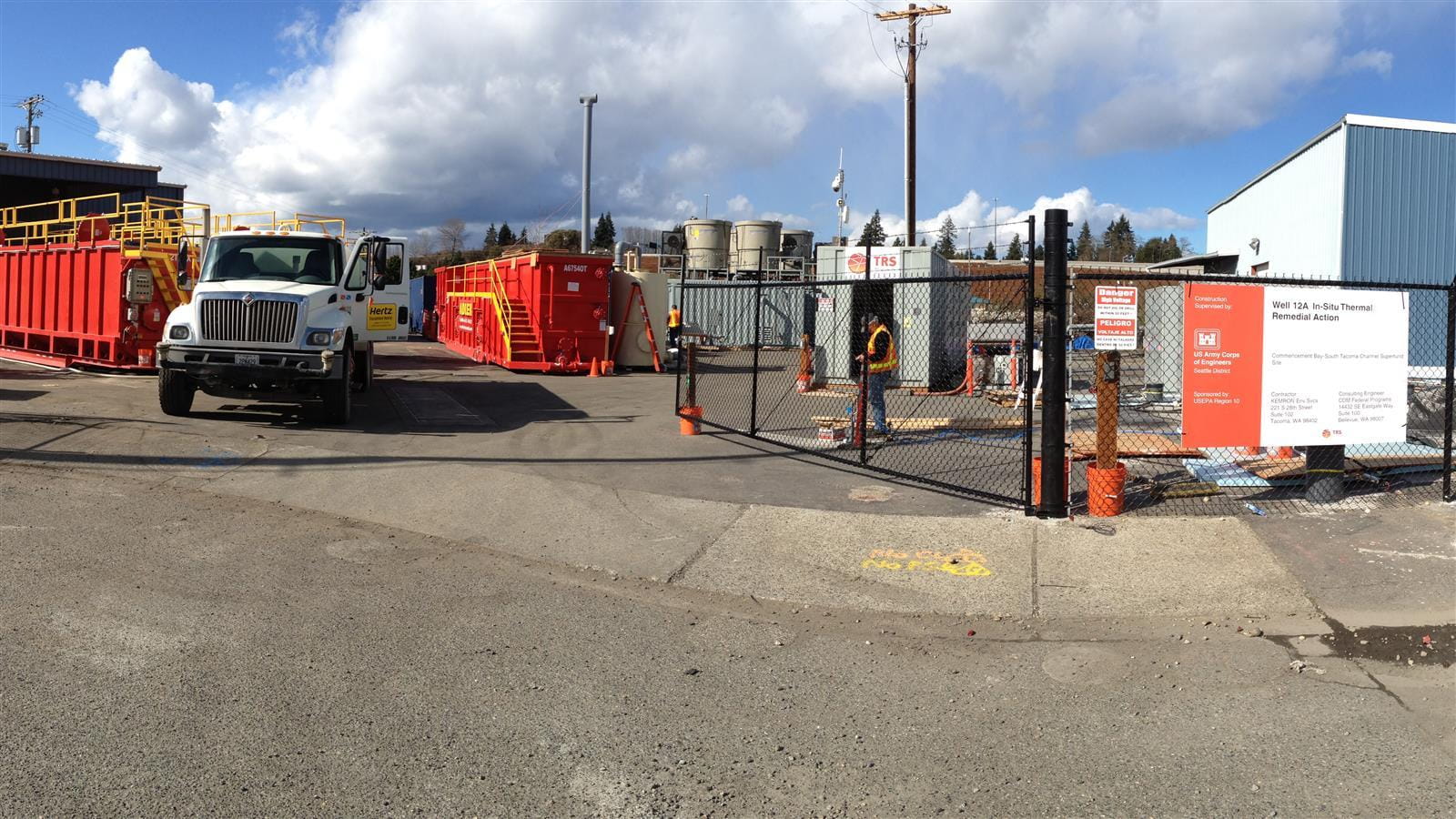Rethinking Superfund Remediation
Washington State's Puget Sound, home to some of the most serene waterways in the U.S., witnessed one of the biggest industrial booms of the last century. That transformation carried a price, one in the form of chemical byproducts. Nearly a half-century of industrial manufacturing and waste oil recycling left behind harmful chemicals in the groundwater near Commencement Bay and the Port of Tacoma. In response, the U.S. Environmental Protection Agency (EPA) shut off a local drinking water well in the early 1980s after discovering traces of the industrial solvent and known carcinogen trichloroethene (TCE) in the aquifer. The site made its way onto the national list of Superfund sites, and years of remediation efforts ensued with mixed results.
The presence of DNAPLs, including TCE, found within the site’s complex subsurface hydrogeology made this one of the most difficult types of remediation. Conventional methods like "pump-and-treat" successfully removed some of the chemicals, but the process was slow, and drinking water well 12A remained offline well into the 21st century. For EPA and the citizens of Tacoma, a permanent solution was long overdue.
The presence of DNAPLs, including TCE, found within the site’s complex subsurface hydrogeology made this one of the most difficult types of remediation.
EPA and CDM Smith introduced a new strategy with three additional treatment technologies, made possible by CDM Smith's research efforts. The pump-and-treat method, called a "groundwater extraction and treatment system," continued operation, while the project team concurrently ran a new comprehensive, multi-component treatment reconfiguration. They also paired the new aggressive triple-treatment approach with a contaminant mass-discharge reduction goal, using a mix of integrated technologies to maximize synergy and overall treatment performance. The use of mass discharge set a more ambitious target of 90% reduction in harmful contaminants and deviated from the use of conventional maximum contaminant levels (MCLs) more commonly used in these types of cleanups.
Deployment and Results
Beginning with a robust conceptual site model, EPA and CDM Smith narrowed the target area, allowing for more localized treatment of affected areas and ultimately cost savings exceeding $1 million. The rigorous vertical profiling investigation paired with 3D-modeling of the data helped pinpoint a discrete zone of DNAPL-impacted aquifer responsible for more than 96 percent of contaminant discharge. With a drastically reduced target area, the project team then set out to apply their Department of Defense-funded research and demonstrations to reality.
Having demonstrated that bioremediation can increase chlorinated solvent transfer out of DNAPL, and therefore out of the groundwater, the team added it to their treatment plan. They went a step further, applying lessons learned from another demonstration treating TCE in DNAPL to deploy enhanced anaerobic and heat-enhanced bioremediation. The remedy ultimately used the following strategies:
- Excavation: Completed to remove filter cake and associated soil containing high-concentration contaminants present in the shallow soil.
- In situ thermal remediation: Boiling and steam stripping DNAPL contamination around and beneath the former oil recycling building to quickly remove and treat large contaminant sources.
- Enhanced anaerobic bioremediation: Injection of bioremediation amendments to stimulate degradation of contaminants to non-harmful end products within the large groundwater plume.
- Heat-enhanced bioremediation: Innovative combination of low-energy thermal remediation with bioremediation to address small DNAPL hotspots.
- Groundwater extraction and treatment system (GETS): Continued operation of the original GETS “pump and treat” system.
The latest sampling results revealed that water flowing to the city’s drinking wells is below the MCL for TCE and other contaminants. In total, TCE mass discharge was reduced by over 97 percent from the DNAPL source area. After decades of steady but slow treatment of the contaminated site, remediation efforts conducted in the late 2010s brought the site into compliance with EPA goals and cleared the path for the turnover of the site back to the state of Washington. The Well 12A project team achieved the record of decision goals and made more progress in reducing the contaminant impacts to the drinking water aquifer than the previous 30 years of treatment.
This project represents a significant investment in the restoration of the aquifer to its beneficial use as a drinking water source for the City of Tacoma. Post-remediation sampling and evaluations have demonstrated that the project lowered contaminant mass discharge well below acceptable levels and that residual contaminants will attenuate to below MCLs prior to reaching Well 12A. Additionally, the project has set a precedent for the continued use of mass discharge as a measure of success. Incorporating mass discharge into a project record of decision can lead to more efficient treatment combinations and ultimately a more cost-effective and streamlined remediation process.

Innovation, multi-disciplined collaboration and increased stakeholder trust will allow the municipal water supply system to meet the city’s increasing water demands.














